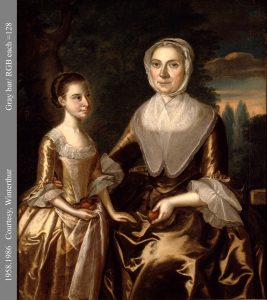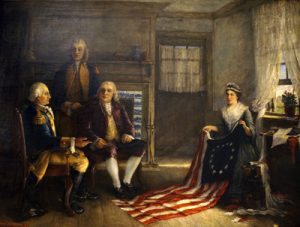When discussing the Revolutionary War, the first connection that is usually made is that of male soldiers fighting for their independence from Great Britain. These men are undoubtedly seen as being heroes and making a very crucial mark in history. But, heroism has many forms, some of which do not consist of male and/or war dominance. It seems that history is often written about males, leaving out dominant female figures or contributions and when a dominant female figure comes to surface, controversy takes place.
Women are often overlooked in most of history, but specifically overlooked throughout a large portion of the 18th century. They were present during these events, some witnessing it, others actively taking part but we never really hear of women’s contributions before we hear about the “Founding Fathers”. There was this expectation placed on women during the Revolution to reproduce as much as they could and, in some cases, women had more than a dozen children. That in itself is heroic considering the risks pregnancy and labor can bring. But moving on from that, women during this time had so much more to offer than only being “big-bellied” and “big with child”. Klepp states on page 920 that “barrenness was unnatural”, that there was this undying connection between women and pregnancy, that the center of their “housewifery” was procreation. In the pictures Klepp shows throughout her writing, there is an emphasis on womanhood and reproduction. As we discussed in class, the eye is drawn to the woman’s abdomen, for example the symbolism of the strawberries on in the picture of Rebecca Holdsworth Young and her Granddaughter on 925. The caption under the picture explains that the granddaughter holds more than one strawberry symbolizing a future filled with many children. As for the Grandmother, she can no longer bear children but the “real fruit of her loins is likewise placed between her outspread legs”, being her granddaughter, pictured below. Again, reproducing can be seen as heroic but also dangerous and was one of the reasons there became a decrease in fertility rates during time (including the husbands being away at war) and a shift of views towards women’s roles as well.
Betsy Ross is still seen as heroic today. In fact, when I was in 5th grade, my teacher assigned a project called “Important People in American History” and provided a list of names. The list contained the names of men and women and ironically Betsy Ross is the person I chose. During the 18th century, Ross maintained this expectation of having children, but it was not her life duty. In Ulrich’s piece, there is this extreme emphasis put on the innocence and purity Ross carried, portraying her as this genuine person who would never do wrong. We are seeing a woman who is so dedicated to her nation that she wanted to contribute in establishing quite a crucial symbolic aspect of nationalism. It is said that she worked alongside George Washington for more than one reason, some of which were due to altering or creating clothing for him. As “legend” has it, Washington asked her to make an official flag for the nation, and the birth of the nations flag is depicted below.
There are controversies over who established the first flag and when exactly is was established, deeming the initial oral tradition of Betsy Ross questionable due to lack of documentation and mainly storytelling. Although, the significance of storytelling at this time was how women made their mark in history, they had a significance attached to their name and participated in “honorary societies”. These strides taken by women to create their own history is what ultimately “created a version of American history that broke the male boundaries of war and politics and the domestic boundaries of women. The credibility of Ross’s oral tradition can be questioned, but the real question is why? Taking into consideration the time of the establishment, word of mouth held just as much importance as writing did because, as I already stated, Ross would do no wrong, she would never lie. What it ultimately comes down to, as Ulrich states on page 4 “The debate over Betsy Ross exposes the difficulty of including women in a national narrative constructed around the biographies of leading figures.” It was still not enough to fully believe that Ross did create the first flag, even with validation of documented eyewitness accounts as stated on page 5.
With such strong male dominating roles during this crucial time for the US, it is common to see little to no mention on women, some of who made more contributions than men! It seems that the men want all of the credit, preventing women from being viewed as equal. On page 12, Ulrich closes with “women’s stories encompassed many themes, but they were animated by civic pride and insistence that women, no less than men, created a new nation.” This is, in my opinion, the most crucial sentence in this entire writing because it defends women’s roles and shows that women do have the ability to do great things. The prime example is Betsy Ross, she witnessed and took part in this shift from a domestic role in society while still being the loving, warm mother and wife.


